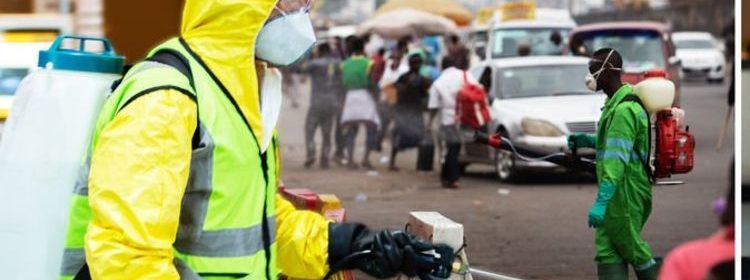Rift Valley fever: Horrifying pandemic warning with pregnant women at risk – no treatment

COVID-19 vaccine side effects are 'pot luck' says expert
When you subscribe we will use the information you provide to send you these newsletters. Sometimes they’ll include recommendations for other related newsletters or services we offer. Our Privacy Notice explains more about how we use your data, and your rights. You can unsubscribe at any time.
Virologists are vigilantly scanning data from field research across the globe to detect the hotspot where the next pandemic will emerge – with the fearsome Rift Valley fever a particular concern. After the coronavirus made the jump from animal to human in Wuhan in 2019, scientists warned another pandemic is likely to flare up in the not-so-distant future. The race is now on for scientists to pinpoint global hotspots where the next deadly pathogen will supersede coronavirus and become a pandemic of “greatest threat”.
Epidemiologist at the University of Sydney’s School of Public Health Michael Walsh said: “Essentially, work is focussed on trying to identify the biggest gaps in the modern, globalised world where pathogens may be most likely to slip through and lead to extensive global dissemination.”
This view was echoed by epidemiologist Doctor David Fisman who feared a new pathogen could “mutate and recombine readily and pose the greatest threat for novel diseases.”
The epidemiologist added: “Most of our vulnerability comes from RNA viruses.”
Now the Gavi, a vaccine charity that is a key partner of the Bill and Melinda Gates Foundation, has stated that the next pandemic could be Rift Valley fever.
The Gavi vaccine alliance stated: “Rift Valley fever used to mostly affect livestock in Africa.
“But the virus that causes it is also spread by mosquitoes whose habitats are expanding because of climate change.
“If it were to make its way to the rest of the world, it would decimate livestock causing agricultural collapse as well as affecting human health.”
The deadly virus is also “more deadly” to pregnant women and their babies than the Zika virus.
The Rift Valley fever is “a bunyavirus, related to Crimean-Congo haemorrhagic fever”, according to Gavi.
The virus was first recorded in Kenya in 1931.
The Gavi foundation said: “Since then, it has spread across the continent, and now has the potential to spill over into the rest of the world.”
The US Centre for Disease Control and Prevention (CDC) has classified Rift Valley fever as a category A bioterrorism agent.
DON’T MISS
War on Covid stepped up as single-dose jab approved for UK use [REVEAL]
MPs warn of ‘another lost summer’ for music festivals [SHOCK]
Raise your half full glass this weekend to a bright future [COMMENT]
The disease can be fatal, and people who develop the severe disease can be left with debilitating permanent symptoms.
There are no specific treatments for Rift Valley fever.
However, one vaccine that has not been licenced nor is it commercially available is in existence.
If a person who is infected with the pathogen develops a haemorrhagic fever, there is a 50 percent chance of dying.
Source: Read Full Article



